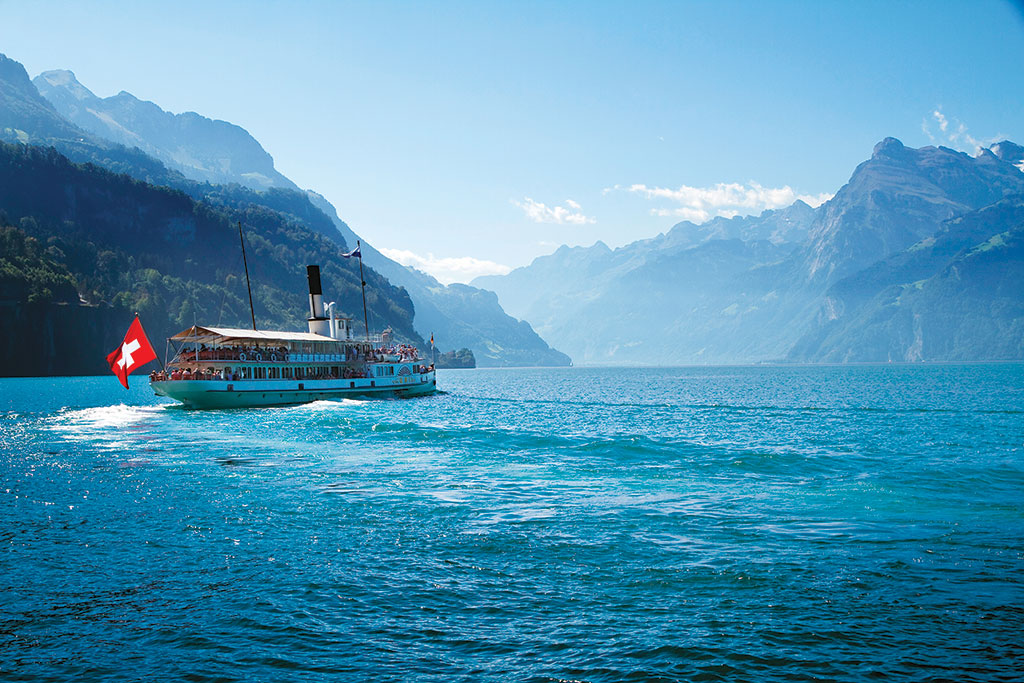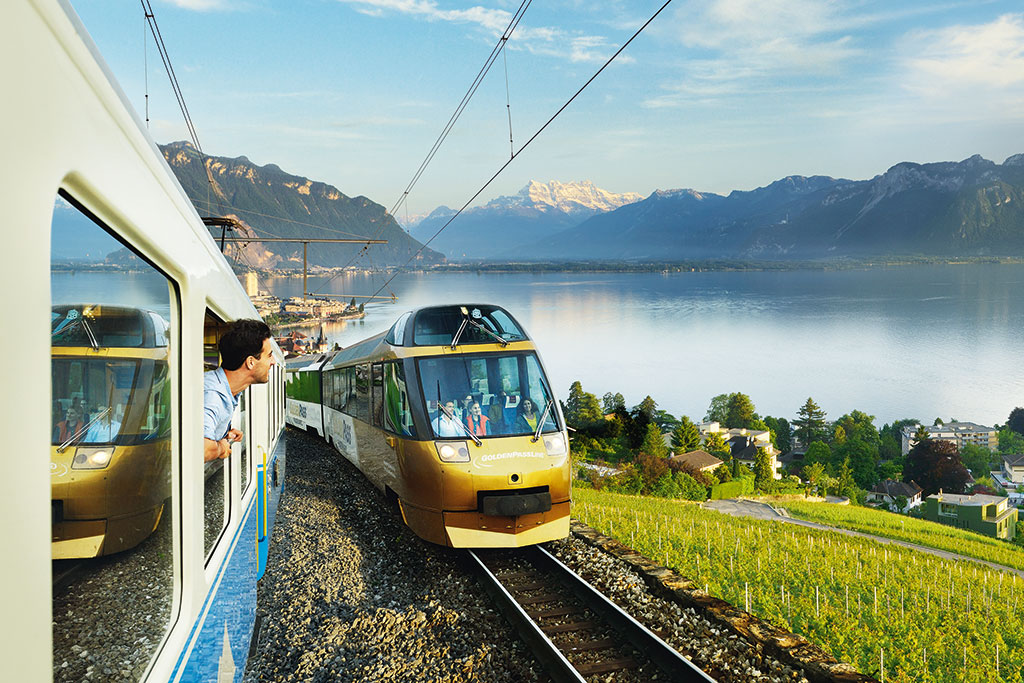Beginning in the seventeenth century and continuing for approximately 200 years, the grand tour [of the European continent] was a rite of passage for wealthy young men, mostly from England. Lasting from several months to several years, the tour was its own reason for being—travel as a broadening and educating experience. Train travel during the industrial revolution robbed the grand tour of its patrician associations but brought about the birth of modern tourism.
This year, the Swiss Transport System has launched the Grand Train Tour of Switzerland, a suggested itinerary that can be started from any point on a 750-mile route that travels over 5 alpine passes, 22 lakes, and 11 UNESCO World Heritage Sites. Along the way, the trains glide through Switzerland’s 4 language groups, each with its own distinct culture. For individual travel throughout the tour all that’s necessary is a Swiss Travel Pass (www.swisstravelsystem.com), which provides unlimited travel during a designated time period, or specific travel days during a longer stay.

For travelers who prefer a prearranged route and hotels, an 8-day/7-night package is available that includes all the train travel, 3-star hotel accommodations, plus the off-route excursion to the top of the Jungfrau from Interlaken, an incredible value.
The itinerary starts out in Switzerland’s gay-friendliest city, Zurich, and if you decide to fly in a day or two early, don’t miss out on staying at the Storchen Zurich (www.storchen.ch), a wonderful, petit grand hotel in the old town right on Limmat River. For an elegant dinner, try the Storchen’s Rôtisserie restaurant (request a table on the terrace), or stroll past 14th century houses behind the hotel to the Zeughauskeller (www.zeughauskeller.ch), an ancient armory that now serves traditional Swiss food. Fordelicious sweets of every description head for Sprungli (www.spruengli.ch) at Paradeplatz, just a short walk from the Storchen.
Begin your second day with a trip to Lucerne. The sleek InterCity train from Zurich’s main station takes you through some of Switzerland’s most beautiful lakefront landscapes in about an hour. Once you’re there, don’t miss the Lion Monument, the Chapel Bridge and Water Tower, and a light meal or coffee-and-dessert break at Heini (www.heini.ch), an excellent pastry shop with several branches. Or try some traditional Lucerne specialties at the Wirtshaus zur Taube (www.taube-luzern.ch). End the day with a scenic direct ride over the Bruenig Pass on the Lucerne-Interlaken Express for an unforgettable trip through the rural heart of Switzerland to Interlaken. Enjoy a relaxed meal in the train’s bistro car while admiring the superb alpine view. Rest up for day three’s big excursion to the “top of Europe,” the summit of the Jungfrau in a cog wheel train that passes through the notorious vertical north face of Mount Eiger on the way up. Once you’re inside the mountain, the train stops at several intervals so that passengers can admire the view through ultra-safe plate glass windows. At the end of the day travel to Montreux via Visp, a small ski resort popular with Swiss families.

Day four begins in Montreux on Lake Geneva where you shouldn’t neglect to stop at Zurcher (www.confiserie-zurcher.ch), the finest confiserie in town, or to have a drink or an early lunch at the Fairmount Le Montreux Palace (www.fairmont.com/montreux).
Travel from Montreux via Visp again on an InterRegio commuter train to Zermatt in the Valais. This is the place to enjoy raclette, the Valais region’s unique meted cheese dish that often inspires the consumption of multiple servings, especially while gazing at the placid Matterhorn that dominates the village of Zermatt. The Valais is also known as the “Burgundy of Switzerland” for the excellent quality of its wines, most of which never leave the country, so be sure to try some on site.
On day five, take the Glacier Express train from Zermatt to St. Moritz with fine dining on board the train with a three-course menu or a single specialty of the day available right at your seat. Once you arrive in St. Moritz, don’t miss Hanselmann (www.hanselmann.ch), my favorite pastry shop for lunch or a slice of their caramelized walnut Engadiner Nusstorte, an unforgettably taste experience.

Afterwards, have a drink at Badrutt’s Palace (www.badruttspalace.com), the first hotel ever to be called a palace when it opened in 1896. First thing the next morning, travel to Bellinzona capital of Ticino via the San Bernardino pass for more unforgettable views of the alps.
On your seventh day, visit Bellinzona, the site of 3 spectacular medieval castles, walled fortifications, and Locanda Orico (www.locandaorico.ch), the best restaurant in town. In Ticino it’s easy to hop on one of several commuter trains an hour for a quick trip from Bellinzona to Lugano, about an hour south, and back again.
Finish the day aboard the Wilhelm Tell Express with a train trip from Bellinzona to Flueelen, and then a paddle wheel boat from there back to Lucerne for an overnight and departure the next morning. The antique-style boat glides along while you enjoy an exceptional meal accompanied by your favorite beverages. Your exciting train trip winds down aboard a nostalgia filled boat on the placid waters of Lake Lucerne.


